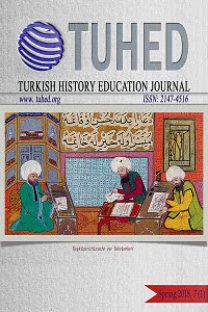Çeviri: Akademi'nin kalbi: Orta Çağ üniversiteleri, ders kitapları ve akademik kütüphanelerin doğuşu
Modern Akademik Kütüphane, üniversitelerin öğretme ve öğrenme misyonlarında çok önemli bir rol oynamaktadır. Bu merkeziyet, belki de en iyi "Kütüphane üniversitenin kalbidir." söylemiyle örneklendirilebilir. Ama bu, Yüksek Orta Çağ'da üniversitelerin başlangıcından beridir hep böyle miydi? Bu soruyu cevaplamak için, ilerleyen tartışma Orta çağ dünyasında üniversitelerin kuruluşunu, okullaşmalarını ve pedagojilerini bilgilendiren yazısal gelenekleri ve daha sonra üniversite ve kolej sisteminde akademik kütüphanelerin doğuşunu inceliyor. Yazar, akademik kütüphanenin yükselişinin kaçınılmaz olmadığını, daha ziyade her biri kütüphanenin nihai gelişimine katkıda bulunan sayısız makro ve mikro düzey kuvvetin etkileşiminin ürünü olduğunu göstermeye çalışıyor. Bunu başarmak için, orta çağ akademik kütüphanelerinin ortaya çıkışını çevreleyen fenomenler, Robert Darnton'un Communion Circuit (İletişim Devresi) modelinin bir uyarlaması içine yerleştirilmiştir. Yazarın umudu, mesleğin tarihi hakkında daha iyi bir anlayışa sahip olmanın, mevcut kütüphane ve bilgi bilimi profesyonellerinin daha sağlam mesleki kimlikler ve daha derin uygulama felsefelerinin gelişimine olanak sağlamaktır.
Anahtar Kelimeler:
kütüphane tarihi, akademik kütüphaneler, Orta Çağ üniversiteleri, iletişim devresi, öğrenme ve öğretme
Translation: The heart of academia: Medieval universities, textbooks and the birth of academic libraries
The contemporary academic library occupies a crucial role in the teaching and learning mission of universities. This centrality is perhaps best exemplified by the popular saying that the library is the heart of the university. But has this always been the case since the inception of universities in the High Middle Ages? To help answer this question, the following discussion traces the creation of universities within the medieval world, the textual traditions that informed their scholarship and pedagogy, and the later birth of academic libraries within the college and university system. The author attempts to demonstrate that the rise of academic libraries was not inevitable but, rather, the product of the interplay of myriad macro- and microlevel forces, each contributing to the library’s eventual development. To accomplish this, the phenomena surrounding the emergence of medieval academic libraries are embedded within an adaptation of Robert Darnton’s model, the Communications Circuit.It is the hope of the author that having a better sense of the history of the profession will allow current library and information science professionals to develop more robust professional identities and deeper philosophies of practice.
Keywords:
library history, academic libraries, medieval universities, communications circuit, learning and scholarship,
___
- ,
- ISSN: 2147-4516
- Yayın Aralığı: Yılda 2 Sayı
- Başlangıç: 2012
- Yayıncı: Ahmet Şimşek
Sayıdaki Diğer Makaleler
Johann Friedrich HERBART, Charles DE GARMO, Çevirmen: Özgün Şerif SAĞDIÇ
Osmanlı’da taşra darülmuallimin-i sıbyanların kuruluşu: Adana Darülmuallimin-i Sıbyan (1892-1908)
Satı BEY, Çevirmen: İbrahim Caner TÜRK
Çeviri: Akademi'nin kalbi: Orta Çağ üniversiteleri, ders kitapları ve akademik kütüphanelerin doğuşu
Christopher L. PROCTOR, Çevirmen: Berna ÜNAL
Çeviri: Akademi'nin kalbi: Orta Çağ üniversiteleri, ders kitapları ve akademik kütüphanelerin doğuşu
